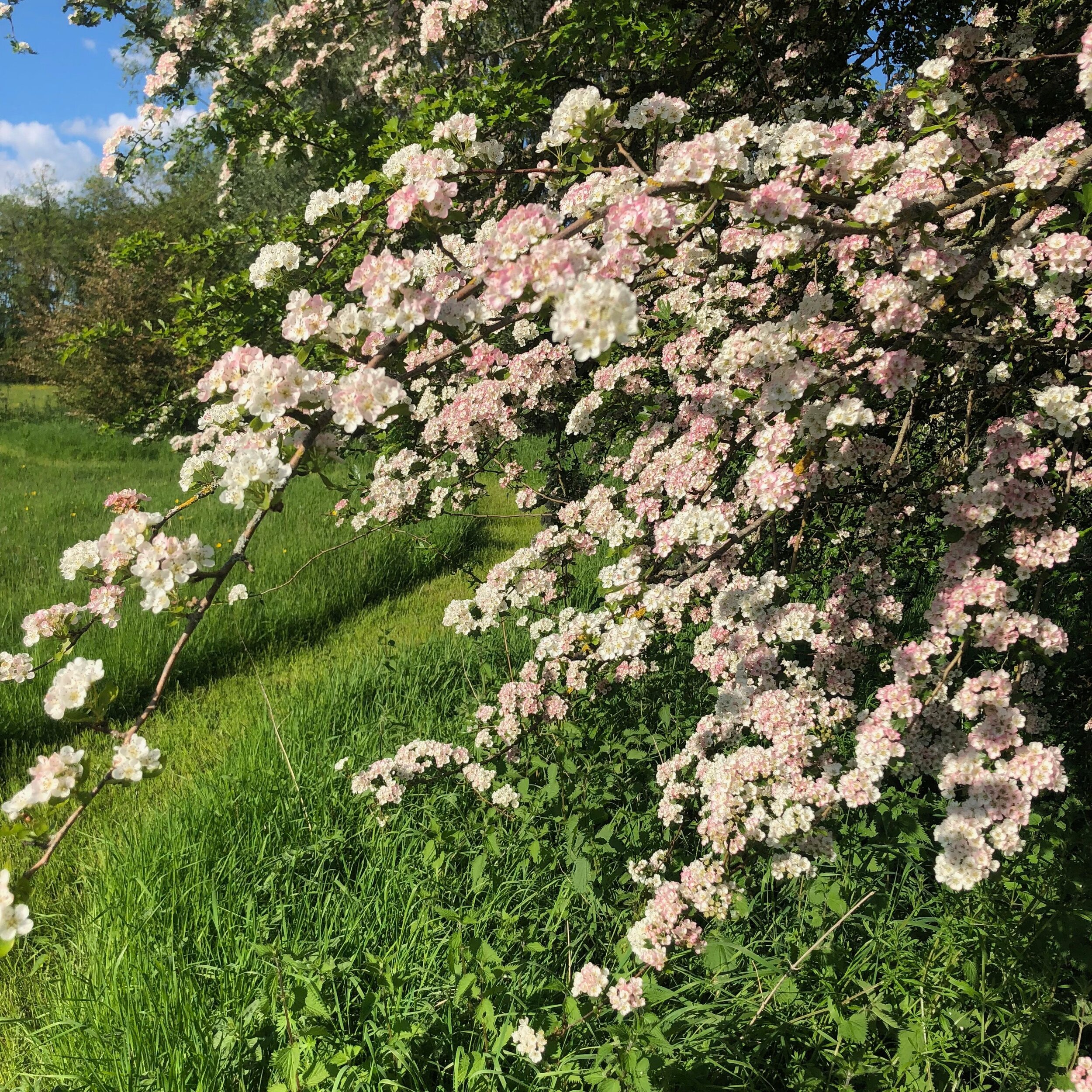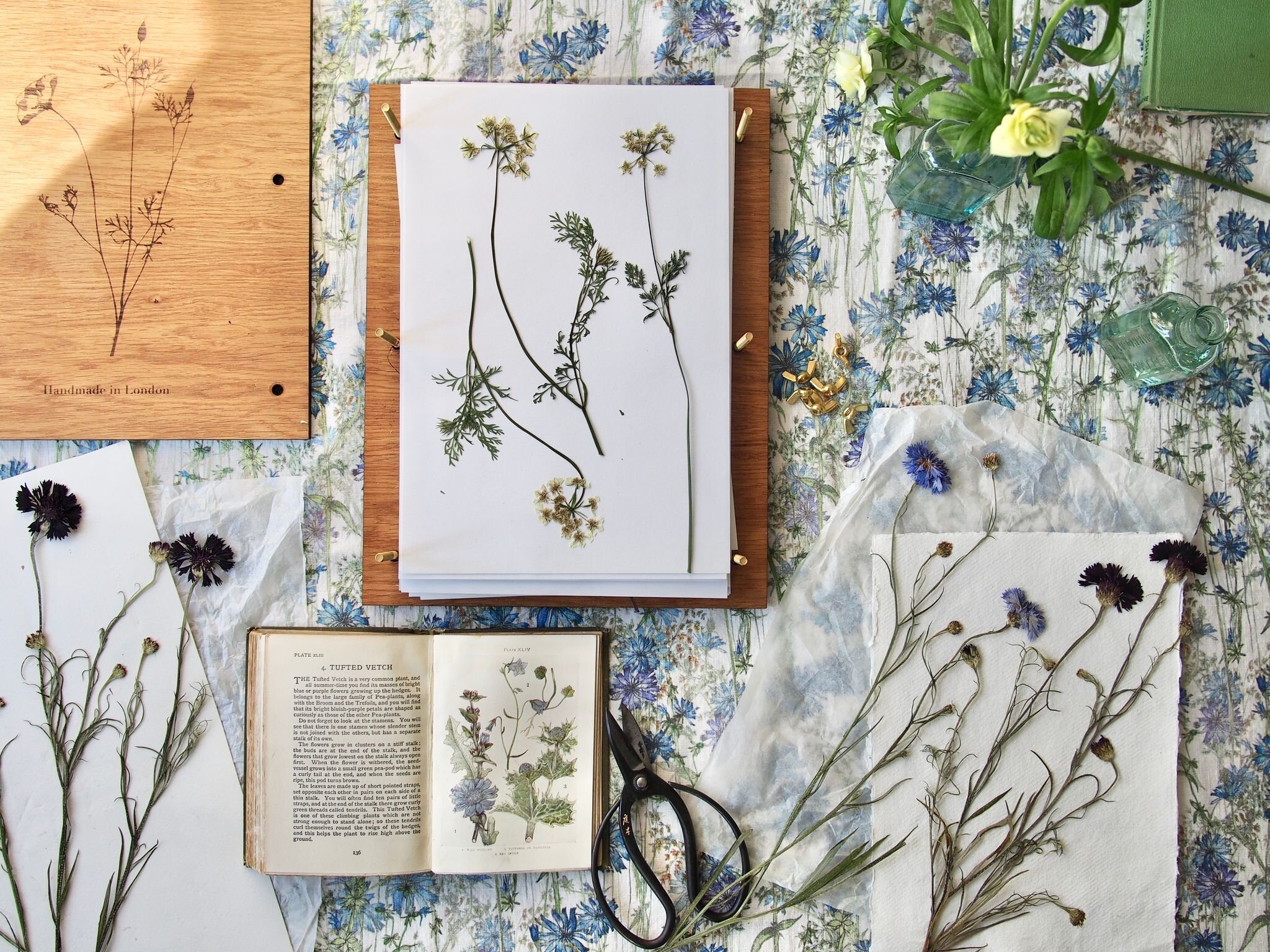Wildflower Picking with JamJar Flowers
AT THYME
“To say we were excited by the prospect of creating an exhibition of pressed flowers in the Tithe Barn at Thyme would be an understatement. The magnificent barn with its soaring rafters seemed the perfect place for us to show off our skills and demonstrate how a simple craft can be elevated into art.”
Melissa Richardson, Founder of JamJar Flowers
The water meadows at Thyme are a wonderful place at any time of year, ancient habitats full of plants and pollinators, criss crossed by waterways. In April, Amy, India and I drove out of London and went to Thyme, to finish writing a book and to collect specimens for pressing. Despite the dreary spring weather there was plenty to be found.
The first flowers that caught our eye were the marsh marigolds, pools of buttery yellow along the river bank and then we found snake head fritillaries dancing like charmed cobras under an ancient oak tree. We crouched in our wellingtons and woolly coats gathering flowers, with icy hands, to press at the Tallet where we were most comfortably billeted.
We returned again in May and picked grasses, wood anemones, allium and buttercups, speedwell and dog violets, bluebell massartiana, cowslips and daisies from the wild places. Down in the cutting garden the first geums, lilac wonder tulips and aquilegia were just beginning.
Tips for Picking Wildflowers
When picking flowers from the wild there are a few simple rules to be followed.
1. Don’t pick more than one or two flowers from each clump, if there are less than twenty of a species in the immediate vicinity, move on.
2. Avoid digging up the roots or bulbs, unless you have the express permission of the land owner.
3. Don’t trample the leaves of flowers like bluebells because it takes the bulb years to regenerate.
4. Stick to footpaths, and if in doubt as to what a plant is just move on and leave it well alone. There are many rare species of wild orchids, for instance, that are so precious they actually have guards to protect them, so tread carefully.
5. You need very few flowers to fill a flower press so make a careful selection of species with action and personality, and leave the rest for others to enjoy.
The Beauty of Flower Pressing
When you cut a flower it is already dying, by pressing it you have given it a second chance of life, you have slowed down the process of death until it is almost imperceptible but you have not halted it completely. Plants continue to fade after they are pressed and this we accept as a part of their evanescent beauty.
For those who don’t appreciate their art work fading over the years we have teamed up with the brilliant Adam Lowe of Factum Arte in Madrid. Through an innovative mix of art, science and technology, Adam has worked out a way of scanning our pressed specimens which reproduces them in minute detail retaining all the complex structure of the plant in elevated 3D prints. At Thyme we will be exhibiting the prototypes of five super scaled botanical specimens captured at the moment of perfection.
By presenting these delicate woodland plants as giants we have stepped through the looking glass to bring a modern reinvented form of Nature Printing to Thyme this summer.







